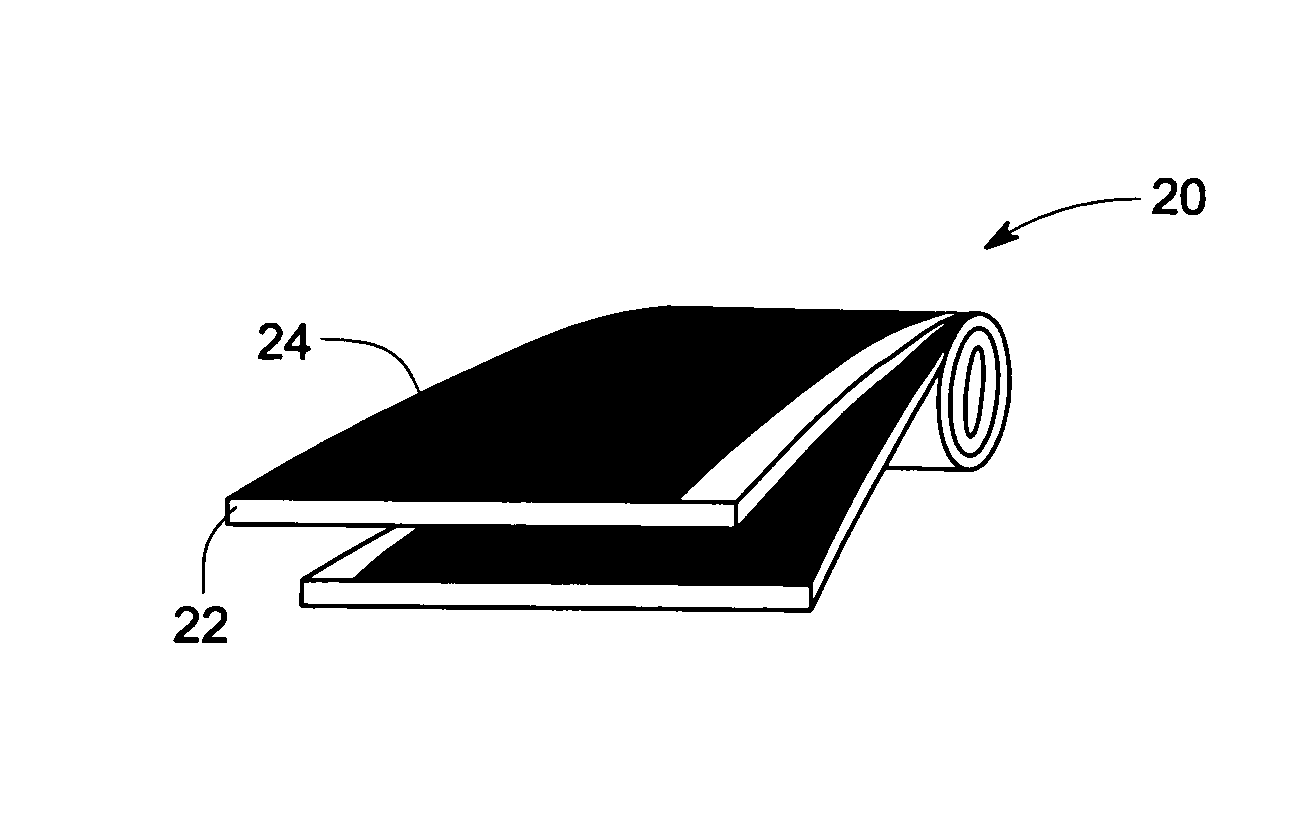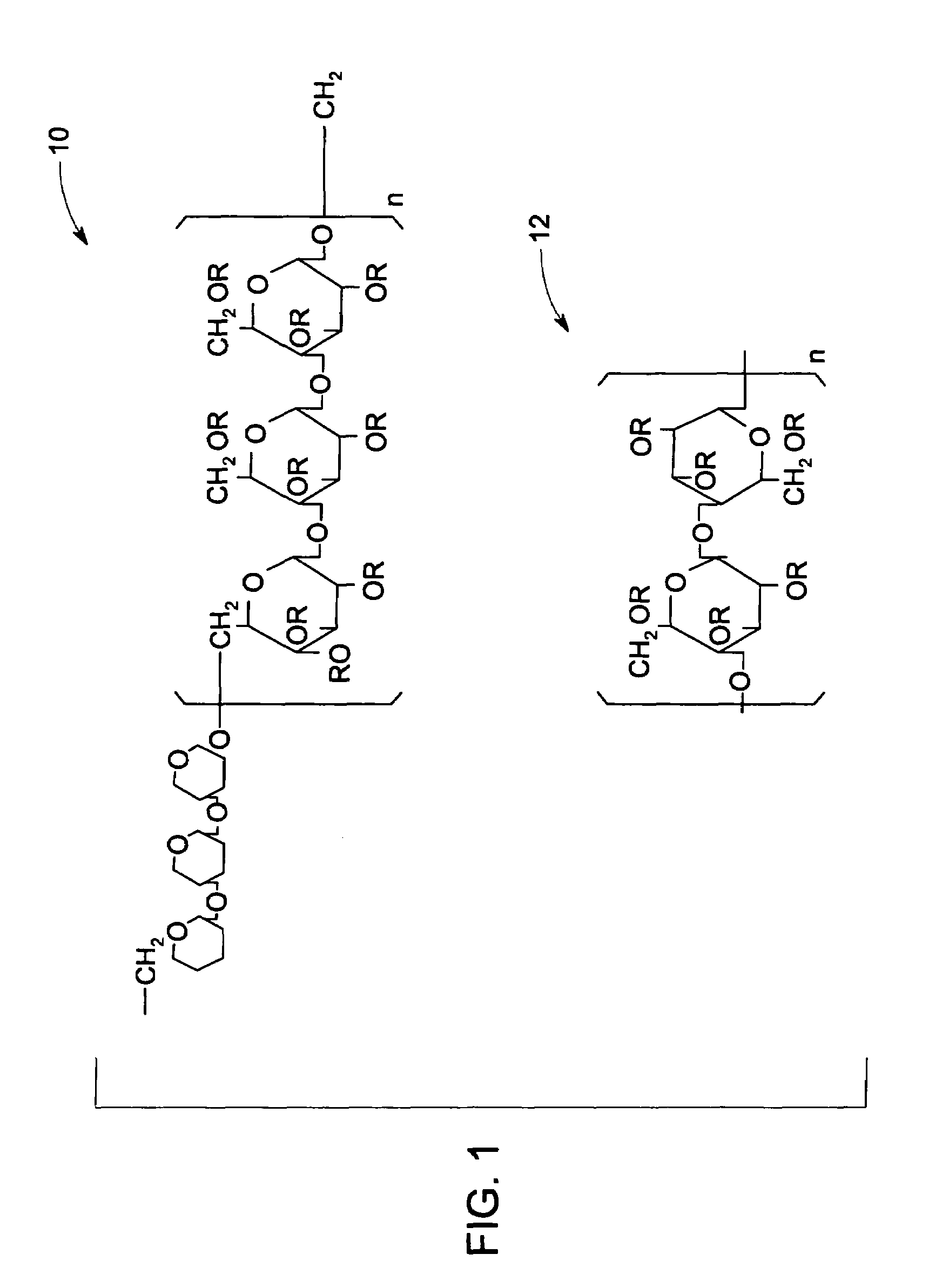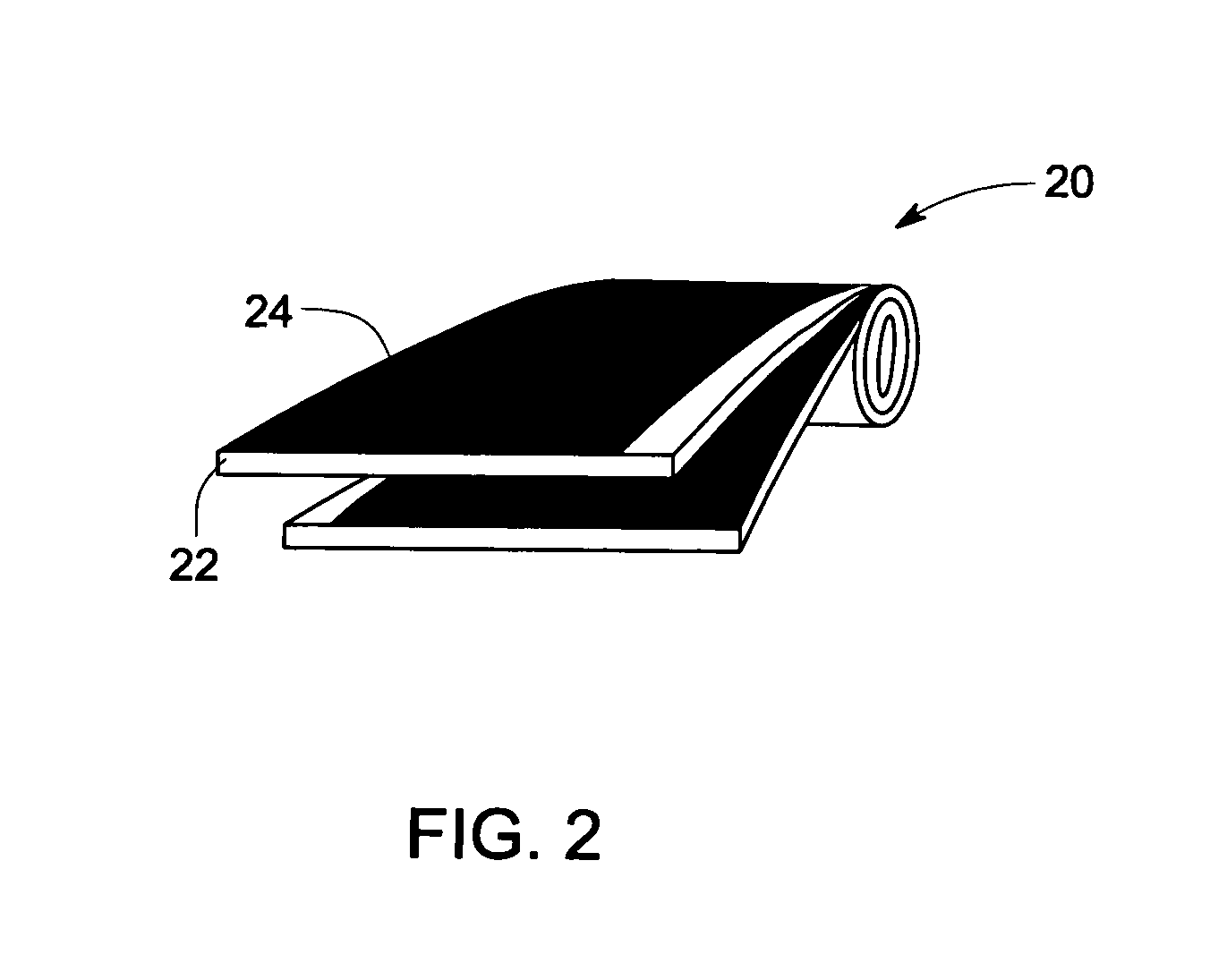High energy density capacitors and methods of manufacture
a high energy density, capacitor technology, applied in the direction of fixed capacitor details, fixed capacitors, transportation and packaging, etc., can solve the problems of limiting the operating voltage of the capacitor, and the trade-off between these two properties may not be advantageous, and achieves high dielectric constant and high breakdown strength
- Summary
- Abstract
- Description
- Claims
- Application Information
AI Technical Summary
Benefits of technology
Problems solved by technology
Method used
Image
Examples
example 1
[0041]10 grams of cyanoethyl pullulan (CR-S) powder was added into 40 grams of N,N-dimethylformamide (DMF) to prepare a solution with 10% polymer by weight. The solution was stirred at room temperature with a magnetic stirrer for two hours to dissolve the CR-S polymer. The solution was then cast on a polished ferrous plate and dried at 100° C. in a vacuum oven overnight. The thickness of the deposited film was about 13 micrometers. For polarization (charge density) measurement, a circular platinum electrode was deposited on top of the film using an Emitech K575X sputtering machine. The diameter of the platinum electrode was 4 mm, and the original steel plate was used as the bottom electrode. Polarization measurements were then performed with a 1-ms triangular waveform. FIG. 6 shows typical charge density versus electric field relationship for the resulting capacitor. As indicated in FIG. 6, the charge density was roughly proportional to the applied field strength, suggesting that CR...
example 2
Solution Cast Free-standing CR Films
[0042]10 grams of CR-S powder was added into 40 grams of DMF to prepare a solution with 10% polymer by weight. The solution was stirred at room temperature with a magnetic stirrer for two hours to dissolve the CR-S polymer. The solution was then cast on a clean glass slide and dried at 100° C. for two hours. The CR-S film was then peeled off from the glass slide and further dried in a vacuum oven overnight. The thickness of the free-standing film was about 18-33 micrometers. Dielectric breakdown strength was then measured following ASTM D149 (method A). The top electrode was a stainless steel ball with diameter of ¼ inch, and the bottom electrode was a stainless steel plate. The film was immersed into clean insulation mineral oil, and direct current (DC) voltage was applied at a ramp rate of 500 V / s until the sample failed. The mean, median, and maximum dielectric breakdown strength were 419, 430, and 574 V / mm, respectively, and the corresponding ...
PUM
| Property | Measurement | Unit |
|---|---|---|
| energy density | aaaaa | aaaaa |
| thickness | aaaaa | aaaaa |
| thickness | aaaaa | aaaaa |
Abstract
Description
Claims
Application Information
 Login to View More
Login to View More - R&D
- Intellectual Property
- Life Sciences
- Materials
- Tech Scout
- Unparalleled Data Quality
- Higher Quality Content
- 60% Fewer Hallucinations
Browse by: Latest US Patents, China's latest patents, Technical Efficacy Thesaurus, Application Domain, Technology Topic, Popular Technical Reports.
© 2025 PatSnap. All rights reserved.Legal|Privacy policy|Modern Slavery Act Transparency Statement|Sitemap|About US| Contact US: help@patsnap.com



